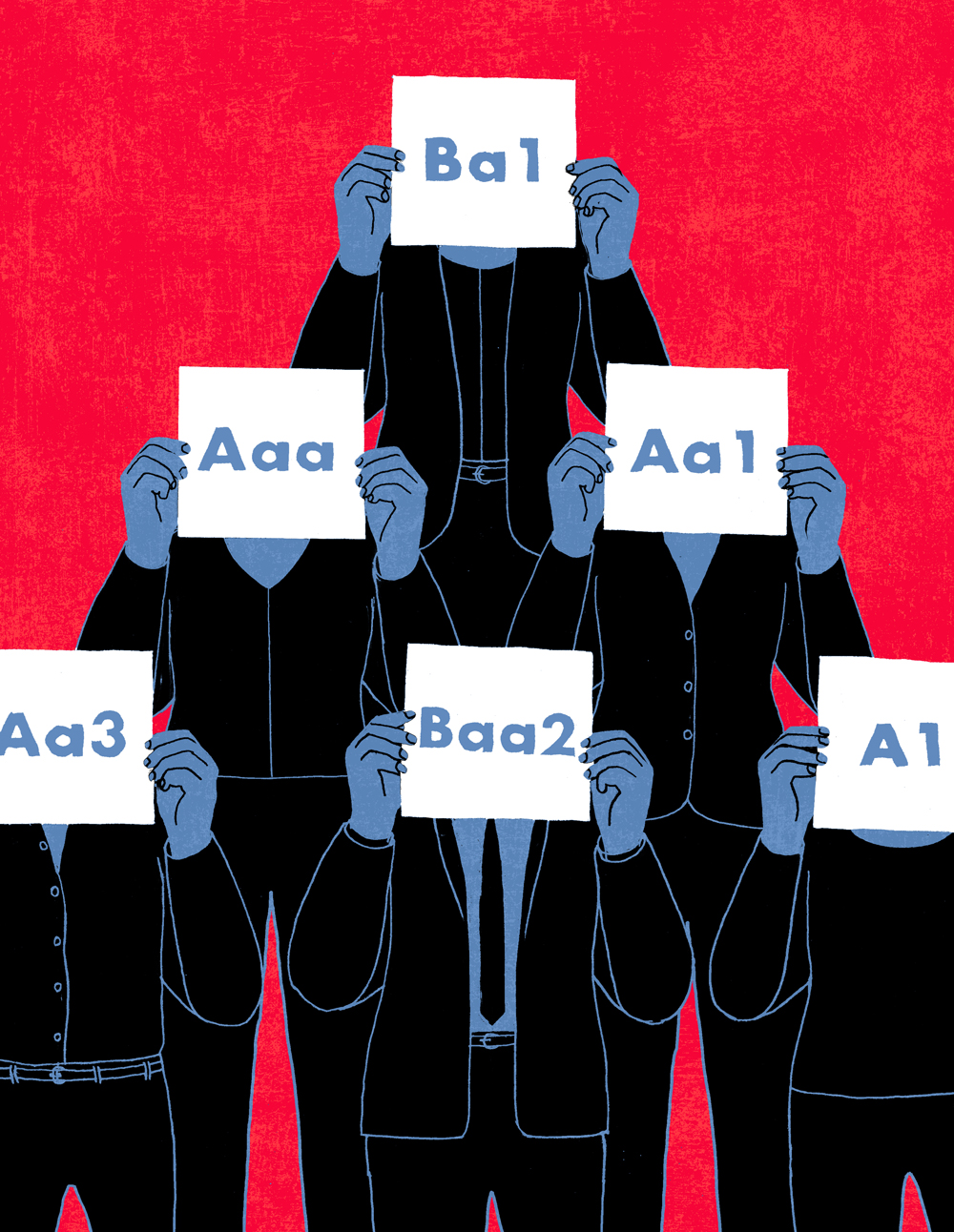Does Reputation Matter to Rating Agencies?
The credit rating agency Moody’s Investor Service downgraded Twitter’s rating to a B- following the close of the social-media company’s leveraged buyout by Elon Musk and a resulting severe decline in revenue. “Twitter’s governance risk is highly negative reflecting Moody’s expectation for aggressive financial policies and concentrated ownership by Elon Musk,” Moody’s said.
The Twitter downgrade is a high-profile example of the research interest of two Penn State Smeal College of Business professors: Do credit agencies act responsibly when issuing ratings? Sam Bonsall, professor of accounting and Deloitte and Touche Teaching Excellence Professor in Accounting, and Karl Muller, associate professor of accounting and Robert and Sandy Poole Faculty Fellow, along with colleagues at Harvard Business School, New York University, and Purdue University, recently published a paper in the journal Management Science titled “Do Rating Agencies Behave Defensively for Higher Risk Issuers?”
“The concern that credit rating agencies cater to their clients and don’t provide early warnings of financial distress to investors is a topic that has garnered significant attention in the business press since the early 2000s,” Bonsall says. “We wanted to find out if that concern is indeed valid.”
Three agencies worldwide — Moody’s Investors Service, S&P Global, and Fitch Ratings — conduct at least 95 percent of the ratings business for corporate bonds, as well as credit ratings for countries, local and state governments, and institutions such as universities.
Compensation of these three big credit rating agencies is a controversial issue, Bonsall explains.
“If a company wants to issue bonds, it goes to S&P, let’s say, for a credit rating. And that company pays S&P for the rating — it’s called the issuer pay model, and it’s the system that has been used since the early 1970s by all three agencies,” he says.

“But the issuer pay model has created this belief that there is a potential, at least, of conflict of interest whereby the agency — because its business is based on selling ratings — may be captured by its clients. If you’re S&P and a bond issuer is paying you a lot of money for a rating, will you give that company a rating it might not be worthy of because you want their business?”
For their study, the researchers gathered ratings data from the financial statements of real companies. They then measured the riskiness of each company based on market perception, and they measured how accurate, timely, and informative the credit ratings were for these companies over a period of time.
“And this is the way we specifically dialed in: A portion of the ratings are what we call mechanical and don’t call for any discretion,” Bonsall says. “But then there’s a lot of discretion that the agencies use to come up with the final ratings. Do agencies use discretion more judiciously in places where their reputation is more at risk?”
Bonsall and his colleagues focused on higher-risk companies in their study because if a credit rating agency misrates a riskier company, the result is more conspicuous. For example, if an agency gave a company a AAA rating and that company went bankrupt a year later, it’s likely that the agency was too optimistic, and the company didn’t deserve that high a rating.
After analyzing the ratings data, the researchers found that higher-risk companies that later ended up going bankrupt were much less likely to be misrated.
“This finding suggests to us that agencies were indeed scrutinizing and doing a better job for companies that eventually went bankrupt,” Bonsall says. “They used their discretion over their methodologies to go beyond what their models say for these companies, assigning their best analysts to their rating teams because these agencies have a reputation to maintain.”
The researchers’ findings that rating agencies provide more accurate, timely, conservative, and informative credit ratings for higher-risk companies calls into question the conventional wisdom that they cater to their clients. While Bonsall acknowledges that the study results don’t completely discount the potential for misrating under the issuer pay model, a mitigating factor is that credit agencies depend on maintaining a quality reputation.
“The evidence we provide from our study serves as a counterpunch to prior academic studies that have portrayed the issuer pay model as more optimistic, slower to downgrade companies, and catering to client preferences,” he says. “The picture is more nuanced, and this is another side to the story. Credit rating agencies’ reputations are real, and they matter enough to affect their behavior.”
This study was partially funded by the Reeves Family Early Career Professorship in Accounting.




